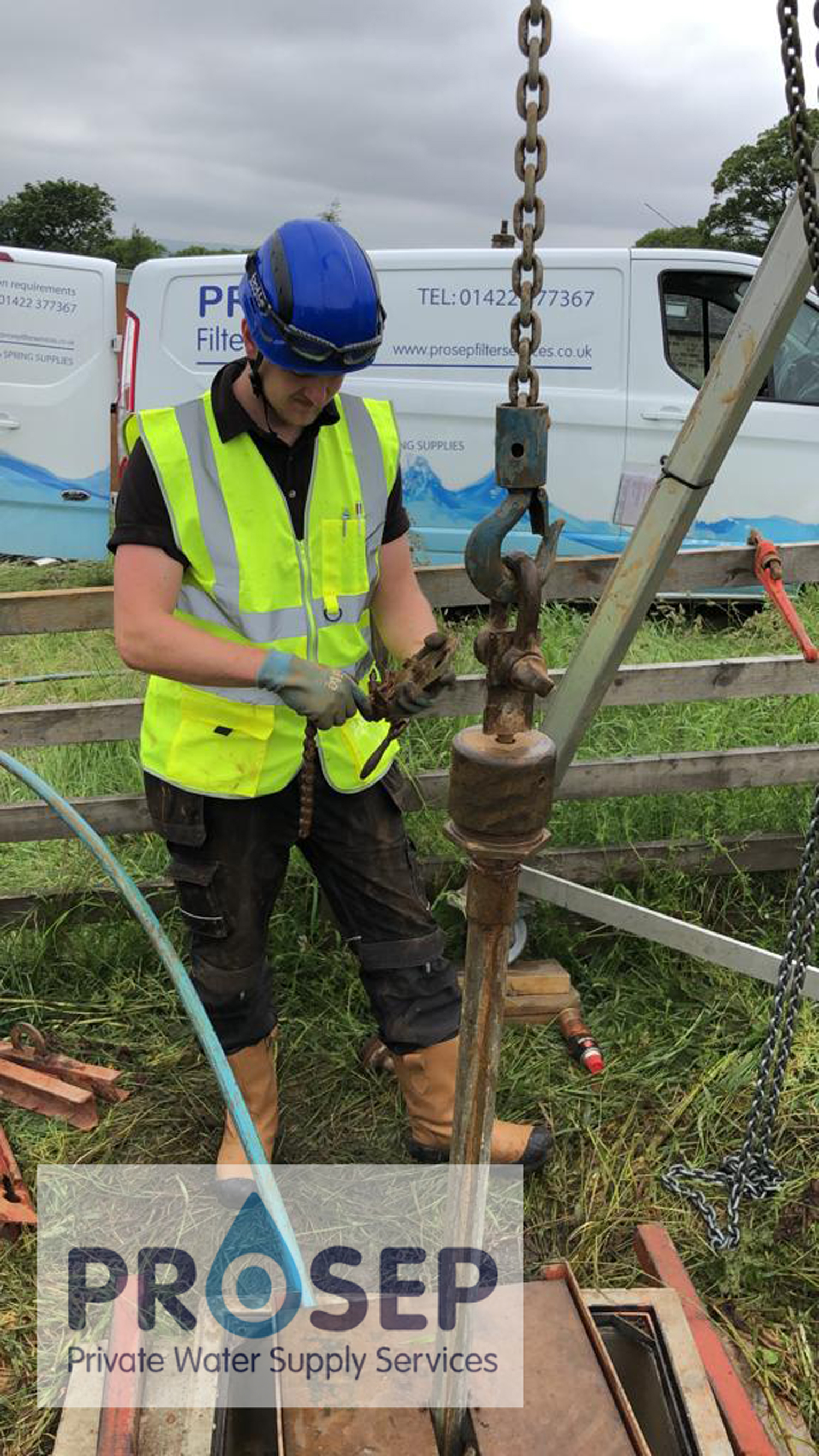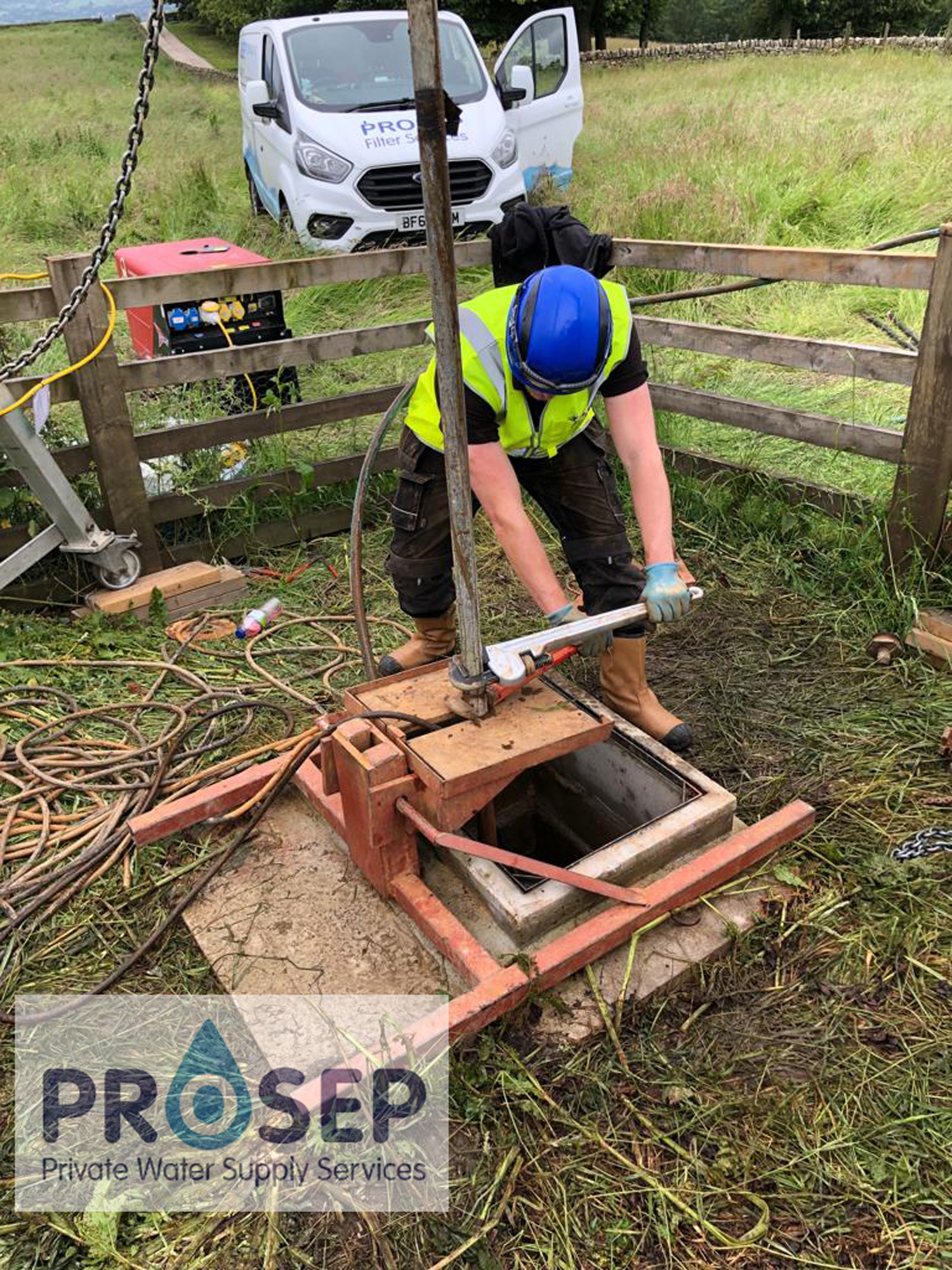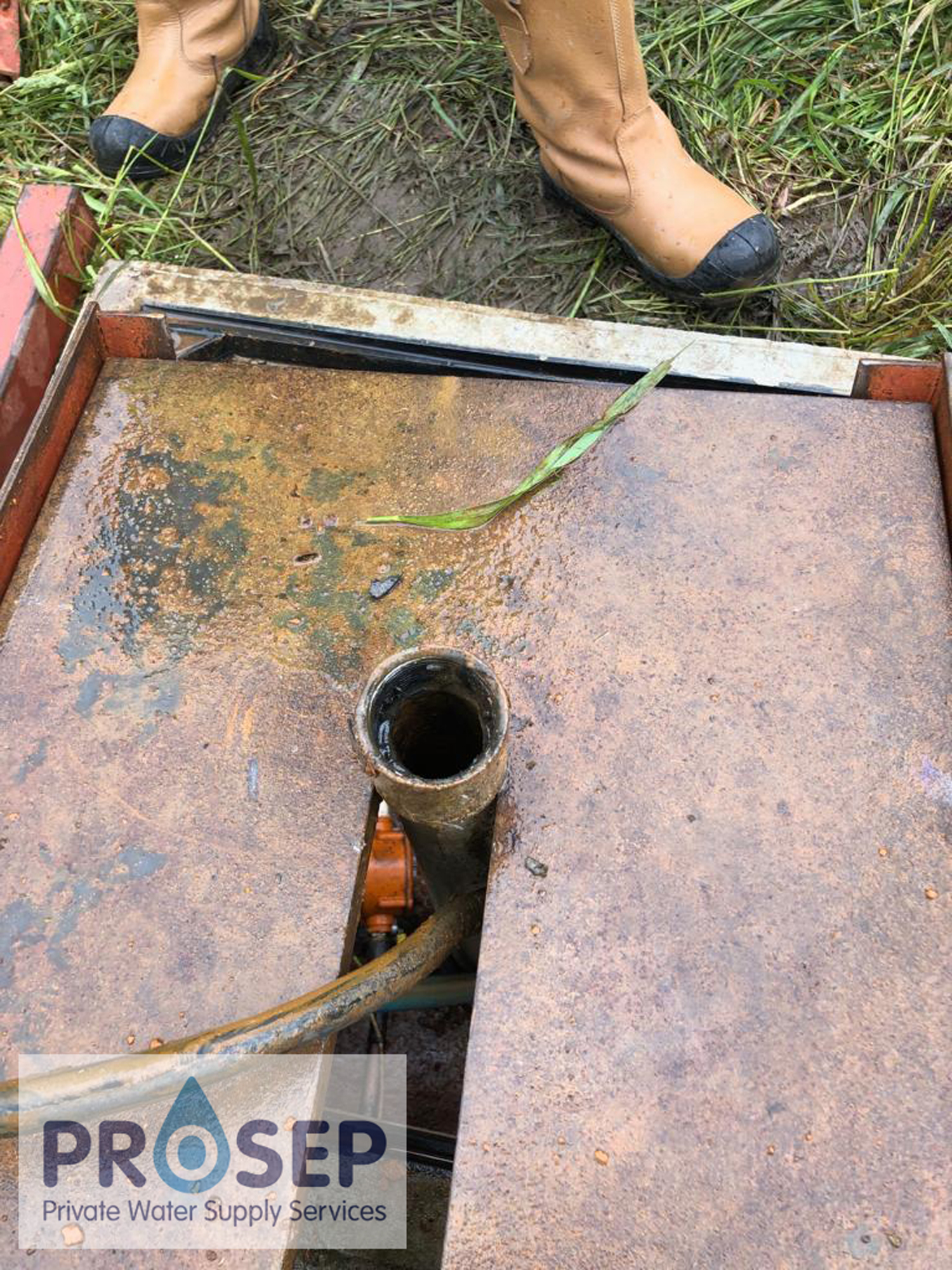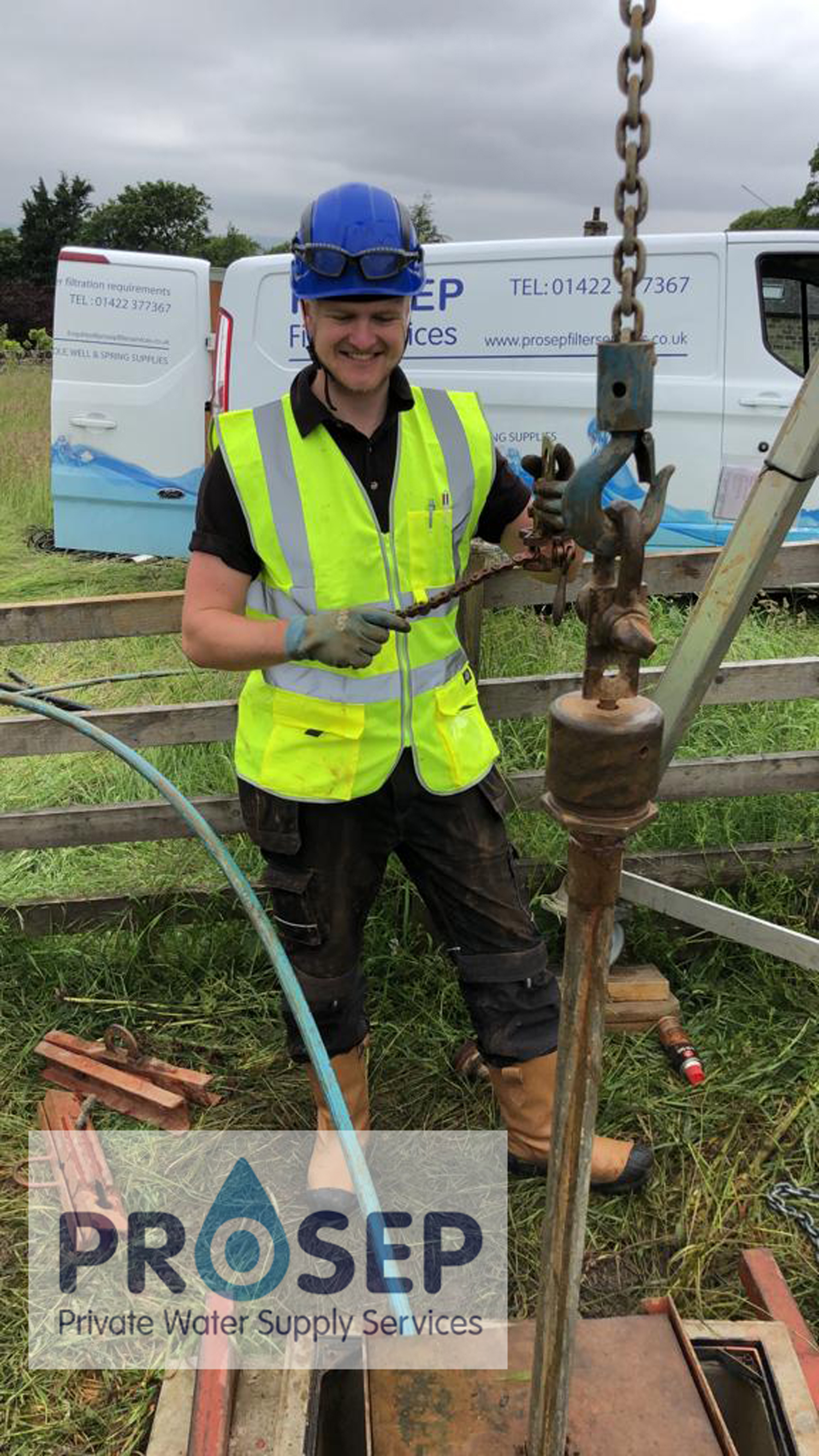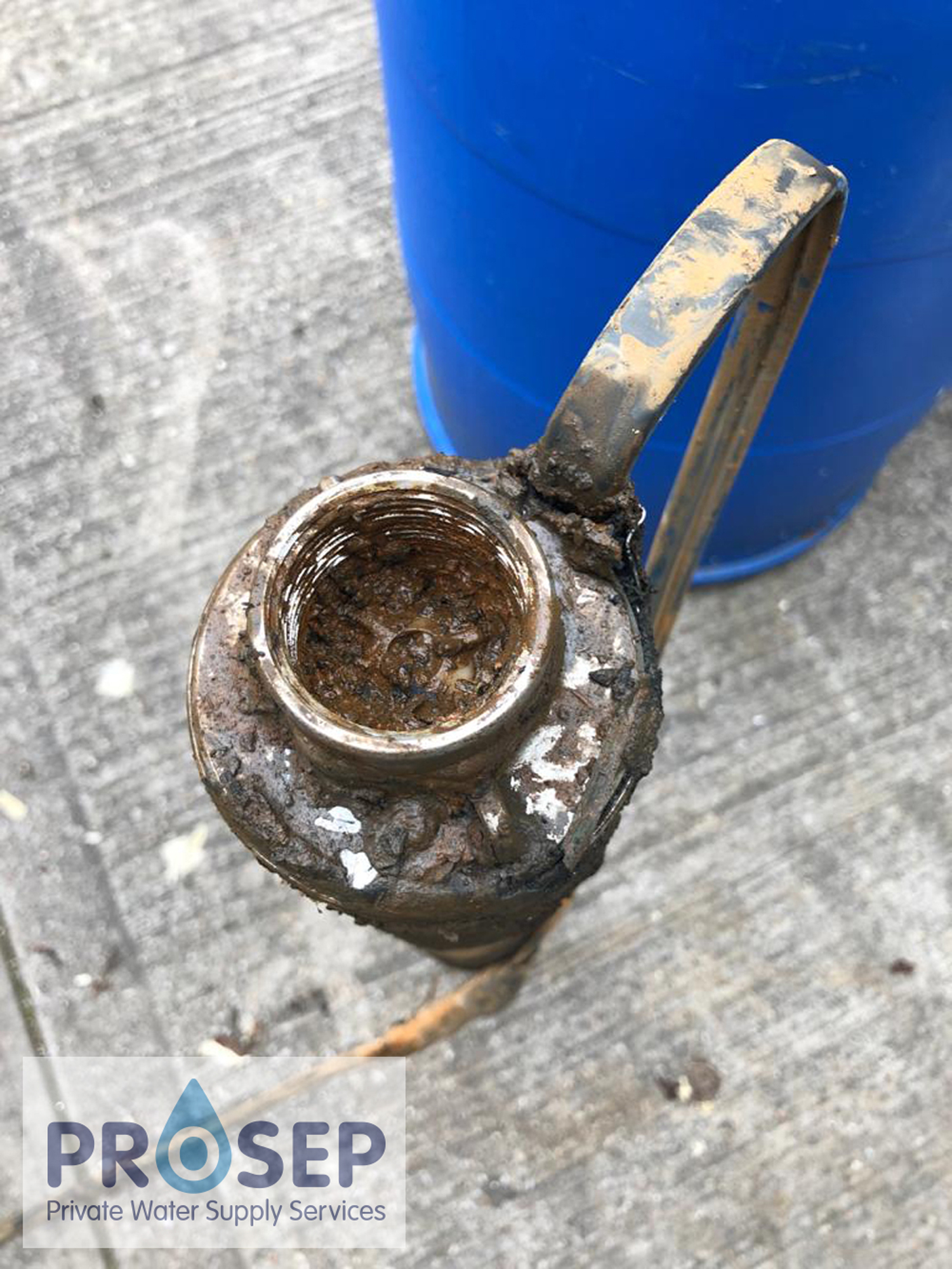Location: Bingley, West Yorkshire
The Problem
This study examines the quality of raw borehole water, which fluctuates over time. We track the history of a borehole in Bingley, West Yorkshire, over four years, starting with a raw water analysis that reveals failures in turbidity (cloudiness), iron, manganese, and lead levels.
Borehole Water Treatment System
We installed a filtration and treatment system that includes sediment filtration, pH treatment, and catalytic reduction for iron and manganese. This system slowly feeds a 10,000-litre water storage tank. From this tank, we pump water through a duplex particle filter, followed by an ultraviolet unit, to eliminate bacterial contamination.
Initially, everything ran smoothly until a routine analysis during a service in April 2018 revealed changes in the raw borehole water quality. Turbidity dropped from the original 38 NTU to 7.7 NTU—an improvement, but still above the limit of 4 NTU. Iron levels surged to 42,300 µg/l (limit: 200), while manganese slightly decreased to 131 µg/l. Alarmingly, lead reached a staggering 346 µg/l (limit: 10), and nickel hit 784 µg/l (limit: 20). These results stemmed from the untreated raw borehole water supply.
Simultaneously tested samples showed:
- Iron: 1.97 µg/l
- Manganese: 1.02 µg/l
- Turbidity: 0.27 NTU
- Nickel: 0.10 µg/l
- Lead: 0.11 µg/l
Since our system lacks specific treatment for lead and nickel reduction, we concluded that these metals likely exist in particulate form, which our backwashing filters on the pre-UV cartridge filters remove. We transported the filters to our warehouse to test the mineral deposits collected in the pre-filter fins. Mixing samples with de-ionized reverse osmosis water ensured no extra minerals entered the analysis. The results mirrored the raw data, indicating that the filtration system was overloaded, leading to mineral break-through.
This system initially produced around 10,000 litres per day, delivering high-quality water. However, production has now dropped to 5,000-6,000 litres per day due to a discovered leak.
In 2019, we noticed poor backwash flow rates after the pressure vessel discharged borehole water and activated the pump. Two factors could cause this: an insufficient borehole pump or the riser pipe (bringing water to the surface) being damaged. We tested the pump electronically while it remained in the borehole and confirmed it was drawing efficiently, leaving us no choice but to lift it.
Borehole Pump Lift
The pump, originally installed with a 1.25inch metal riser pipe 80 metres down, posed a challenge. We couldn’t lift it manually; instead, we had to winch it out, removing 3-meter sections of the riser pipe sequentially. This experience reinforces our use of one-piece plastic (MDPE) pipes for installations. Upon removing the riser pipe, we found several pinholes caused by acid corrosion over the years—yet another reason to opt for MDPE.
The Solution
We supplied a new pump, as the old unit had repeatedly tripped the thermal overload after ten years of service. Upon removal, we discovered the old pump heavily contaminated with iron, further reducing its efficiency.
Useful Info
Why is flow rate important?
Different fixtures and appliances need to have a minimum water flow rate. If they don’t receive this (often because of inadequate water pressure) then it’s likely that they won’t work correctly. Equally important is the consideration of pressure being to high: this could cause damage to plumbing fixtures resulting in leakage.

